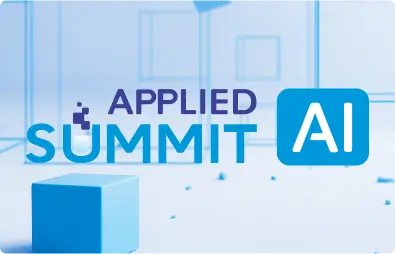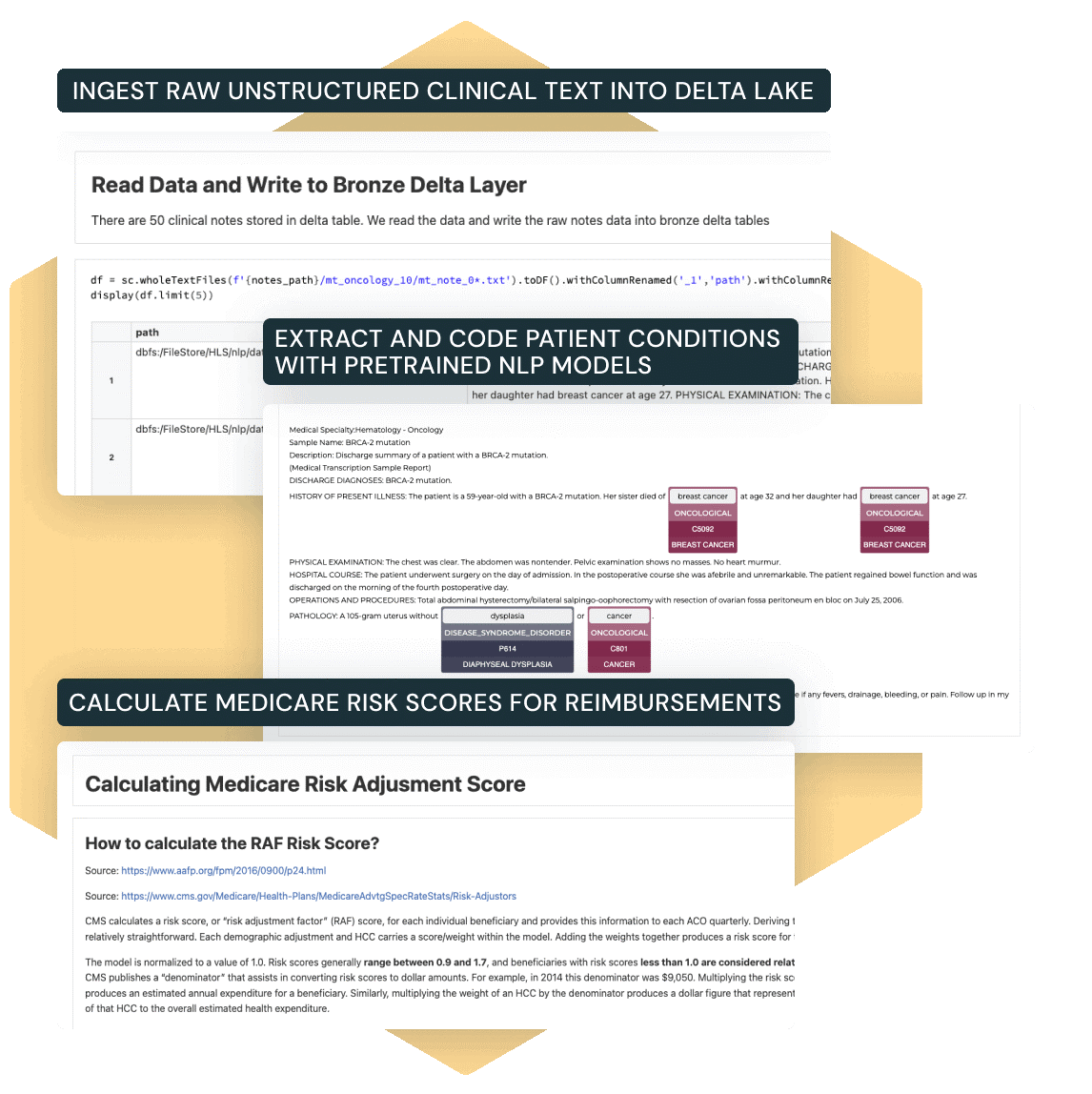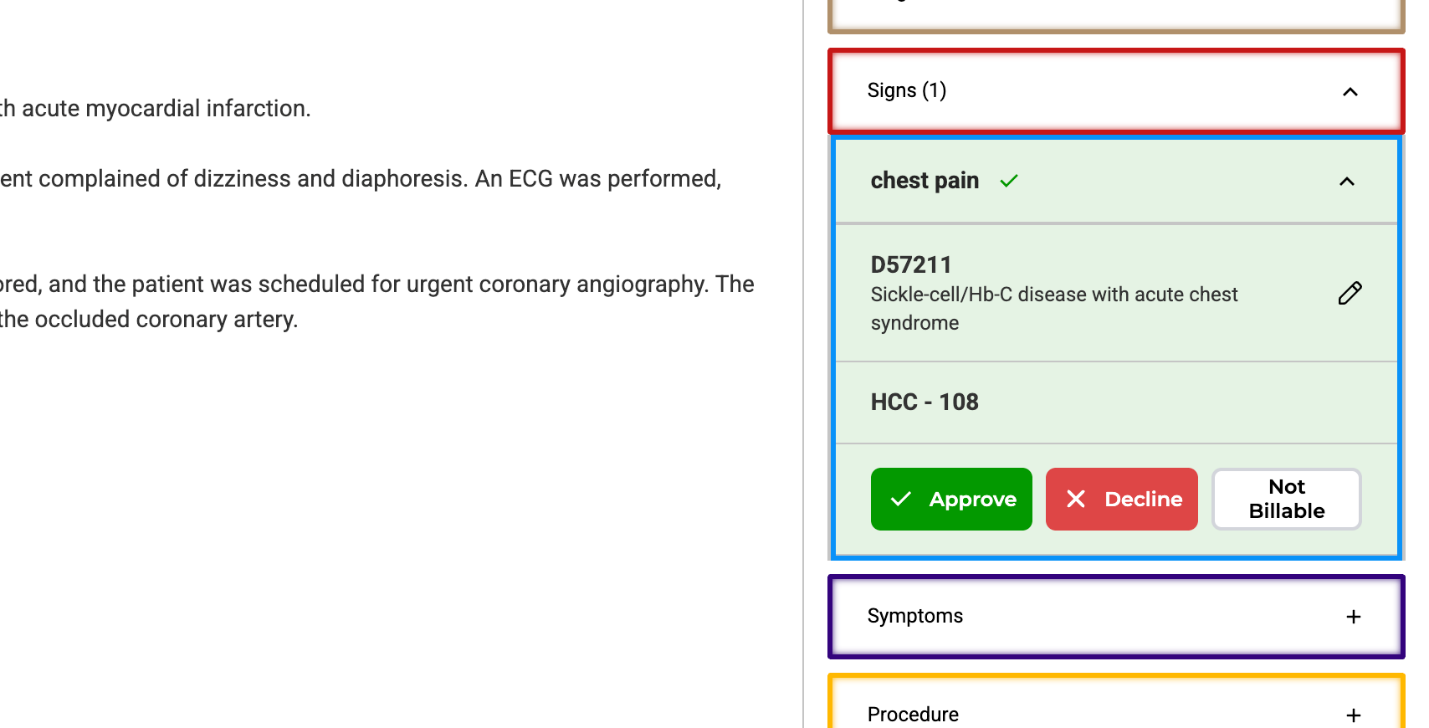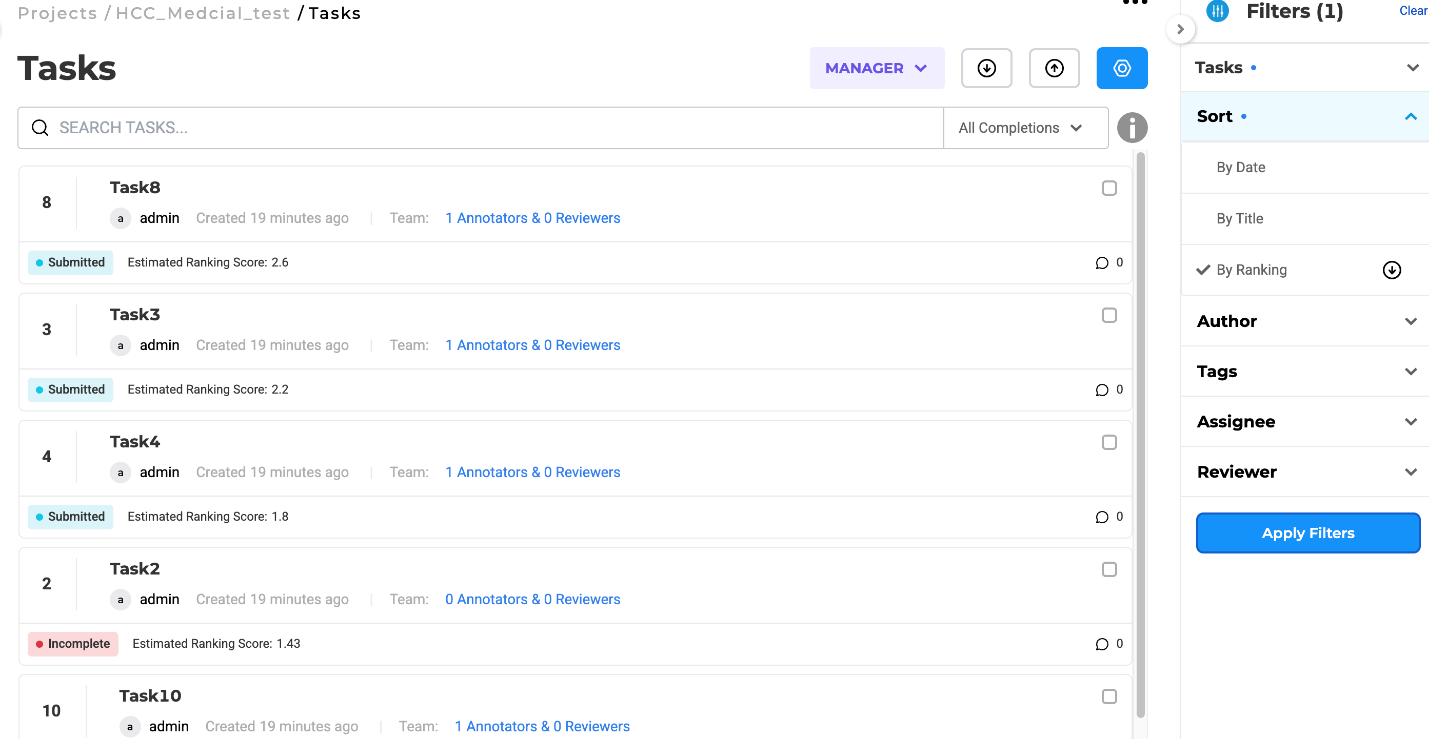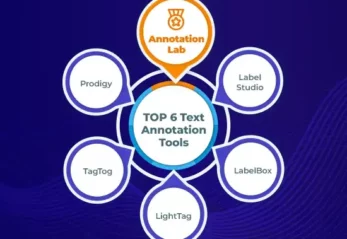Introduction
Healthcare organizations are under increasing pressure to improve the accuracy and efficiency of clinical documentation and risk adjustment. With the rise of value-based care, Hierarchical Condition Category (HCC) coding has become essential to support accurate reimbursement and reflect the true complexity of patient populations. To support this, Generative AI Lab 7 brings built-in HCC coding support to accelerate and streamline clinical annotation workflows.
What is HCC Coding?
HCC coding, or Hierarchical Condition Category coding, is a medical coding system used primarily for risk adjustment in healthcare. It’s especially important in the context of Medicare Advantage (MA) and Affordable Care Act (ACA) plans.
HCC coding assigns risk scores to patients based on:
- Demographics (age, gender, etc.)
- Diagnosed medical conditions (captured via ICD-10 codes)
These conditions are grouped into condition categories, and then further into hierarchical groups (hence the name). The “hierarchical” part means if a patient has multiple related conditions, only the most severe contributes to the risk score, to avoid double counting.
Why is it Useful?
- Risk Adjustment for Fair Reimbursement
- Health plans are paid by CMS (Centers for Medicare & Medicaid Services) based on how sick their members are.
- Accurate HCC coding ensures appropriate reimbursement: more complex patients à higher payments to the health plan/provider.
- Predictive Modeling
- HCC scores help predict future healthcare costs.
- They’re used to identify high-risk patients who might need more care management.
- Regulatory Compliance
- Medicare Advantage and ACA plans must report HCC codes.
- Failure to document accurately can lead to underpayments or audits/penalties.
- Population Health Management
- Helps providers understand patient complexity at a population level.
- Supports initiatives like care coordination, chronic disease management, and resource allocation.
Key Stakeholders in HCC Coding
- Healthcare Providers
- Document patient diagnoses and assign ICD-10 codes. Underdocumentation leads to revenue loss or compliance risks.
- Medical Coders
- Review documentation and assign HCC codes based on ICD-10 codes.
- Ensure documentation supports diagnoses and follows coding guidelines.
- May use NLP/LLMs like John Snow Labs tools for assisted coding.
- Health Plans / Payers
- Aggregate and submit HCC-coded data to CMS.
- Validate coding, ensure compliance, and conduct audits and risk adjustment analytics.
- CMS (Centers for Medicare & Medicaid Services)
- Review HCC data, assign RAF scores, and adjust plan payments.
- Conduct Risk Adjustment Data Validation (RADV) audits.
- External Auditors / Watchdogs (OIG, DOJ, etc.)
- Investigate fraud, abuse, or upcoding. May result in financial penalties or legal action.
John Snow Labs & Databricks – HCC Coding Solution Accelerator
To support these stakeholders and their HCC coding needs, John Snow Labs, in collaboration with Databricks, created a Solution Accelerator for Medicare Risk Adjustment that:
- Detects undiagnosed conditions from unstructured clinical notes using NLP.
- Appends ICD-10 and HCC codes with pre-trained models and in-house built medical LLMs.
- Calculates revised RAF scores to ensure accurate reimbursements.
This solution accelerator comes with a direct integration with Generative AI Lab, where the medical coders can review and validate the pre-annotation results before submitting them for reimbursement.
Support for HCC coding in Generative AI Lab 7
This release introduces support for HCC Coding for text and PDF content. The system now maps detected ICD-10 codes to their corresponding HCC codes, streamlining clinical risk adjustment workflows and insurance claim verification.
New project types:
- HCC Coding for Text
- HCC Coding for PDF and Text (side by side)
These project types enable the association of HCC codes with annotated clinical entities using preconfigured lookup datasets, reducing manual input and improving consistency in medical coding.
Usage Instructions
To enable HCC Coding Support, follow these steps:
1. Project Setup
- Select either of the new project templates during project creation.
- Choose the HCC Coding for PDF and Text (side by side) option if you need a visual representation of the original document while performing HCC coding.
2. Label Customization – On the Customize Labels page, users can either:
- Apply a lookup dataset globally, to all labels in your taxonomy at once.
- Assign Lookup options to specific labels.
3. Annotation Process
- Annotate entities and assign codes using the annotation widget.
- Edit codes inline or through the Annotation Widget from the right panel.
- Annotated chunks are listed under their respective labels. Users can expand labels by clicking the down arrow to view all chunks associated with them.
- Lookup code can be edited or updated directly from labeled tokens or via the labeling section by clicking the edit button.
- Predictions can be copied to generate a completion, allowing the HCC code to be reviewed using the annotation widget on the right.
4. Review and Confirmation Once a task is labeled and lookup codes are assigned along with HCC Codes, reviewers have the following options:
- Accept and confirm the labeled text.
- Decline and remove the labels.
- Tag the label as non-billable, if necessary.
Ranking Score Integration
Tasks can now include ranking scores to support triaging and prioritization, allowing users to manage large annotation datasets more effectively. When importing tasks, users can associate each task with a ranking score that reflects its clinical significance or urgency or the newly calculated RAF score (generated by the Medicare Risk Adjustment Solution Accelerator). These scores are then displayed in the task list and can be used to sort and filter tasks dynamically. This functionality is particularly beneficial in risk adjustment workflows where prioritizing complex or high-impact cases is critical. Ranking scores also integrate with the HCC coding workflow, enabling annotators and reviewers to systematically focus on the most relevant cases for validation.
Key Features and Benefits
- Smart ICD-to-HCC Mapping: Automatically link diagnosed conditions with their respective HCC categories.
- Dual-View Annotation: For enhanced visibility, users can view and annotate PDF and text side by side.
- Streamlined Workflows: Edit, review, and confirm codes in one unified interface.
- Priority-Based Coding with Ranking Scores: Tasks can now be triaged using clinical significance scores, allowing focus on high-value annotations first.
Why It Matters
These capabilities directly impact both the quality and speed of healthcare data labeling. By automating and prioritizing coding tasks, clinicians and coders can spend more time on what really matters—delivering care and insights, not struggling with documentation tools.
Final Thoughts
As healthcare systems continue to scale their data annotation projects, the support for HCC coding in Generative AI Lab 7 is not just a feature—it’s a strategic enabler. It sets a new standard in automated, accurate, and efficient clinical coding.
